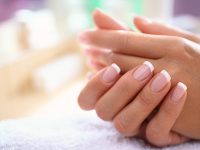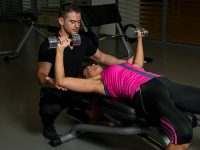Now that you are familiar with what to expect from a sports massage treatment after it has ended, here are our top tips for aftercare.
#1 – Get Plenty Of Fluids
The most important piece of aftercare advice for sports massages is to keep hydrated.
Massages can be dehydrating, even though you might not know it. Massages work by releasing fluid from the soft tissues and into the circulatory system. This fluid is then directed toward the kidneys.
Many people feel the need to go to the toilet immediately after receiving a sports massage.
Rehydrating your body after a massage is important!
Drinking lots of fluids can help to increase elasticity in the muscles and reduce soreness.
A sports massage may not be the best choice if you have tight muscles. To promote muscle flexibility, it is important to stay hydrated.
Drinking plenty of fluids can help detoxify your body, flushing out free radicals created during massages.
Water will also be a great way to keep your metabolism working efficiently.
Sports massage therapists recommend that clients drink large amounts of water following a session. This is to help reduce muscle soreness and promote detoxification. Drinking plenty of fluids throughout the day is a smart idea.
Coconut water is another option if you don’t like plain water.
#2 – Ice/Heat Packs
Use heat/ice packs as a second form of aftercare for sports massages.
You should expect some soreness in your muscles after a massage. However, heat and ice packs are available to help ease the soreness so you can continue your daily activities.
Heat and ice packs offer the following benefits:
- Reduced swelling/inflammation
- Reduced muscle spasms
- You will feel less pain
Heat and ice packs are applied to the skin and cause blood vessels to expand, allowing more blood into the area. This increases oxygen flow to muscles, preventing muscle soreness.
Be aware, however, that neither an ice nor a heat pack will completely relieve muscle soreness. They only help to prevent future soreness.
You can use the packs for up to two days following the appointment or until your aches subside.
A heat pack is not the only option. You can also take hot baths for several days!
#3 – Stretch
After a sports massage, light stretching can be a great way to relieve muscle tension.
You can ease your muscle aches and pains by doing gentle static and dynamic stretching. This will allow them to fully recover.
- Static Stretches are situations in which you can stand, sit, or lie down in one position for a set period of time.
A static hamstring stretch, for example, would be to stand hip-width apart, bend the body forward at your hips, reach the arms towards the feet, and keep the legs straight. Then, hold for between 15-30 seconds.
- Dynamic stretching involves moving muscles while stretching instead of holding them still for a time.
To do a dynamic full-body stretch, step your right foot forwards and lunge forward. Then, extend your arms straight out to shoulder height. Next, twist your body and arms to the right at a 90-degree angle.
Because it involves movement, this stretch is dynamic.
You can do both static and dynamic stretching to relieve muscle pains and aches.
#4 – Keep Moving
You may feel tempted to relax after a sports massage. We can only give you one piece of advice after a sports massage: keep moving!
We don’t necessarily mean running or hiking for long periods of time. You should not sit or stand for long periods of time.
Do not sit cross-legged or hunched over a computer all day. Get up and move often.
Regular days are not good for the body. It can’t handle being in a fixed position for long periods of time. Muscles will tense up. This is particularly true if you’ve had a sports massage.
Light movements and stretching can help relieve aches and pains.
This doesn’t mean you have to schedule it. You could, for example, take a short walk during your lunch break and do dynamic stretching while you wait for the kettle boils.
This will promote elasticity in the muscles and prevent them from becoming too tight after a massage.
#5 – Make Herbal Teas
It may surprise you to know that your recovery from a sports massage can be affected by what you eat and drink. Another tip for aftercare to sports massages is herbal tea.
Many people claim that herbal teas help their muscles recover quicker after intense training sessions or sports massages.
Many herbal teas have anti-inflammatory properties that help to relieve soreness and relax the muscles.
These are the benefits of herbal teas we recommend after a sports massage.
- Ginger Tea is loved by arthritis patients because it helps relieve muscle and joint pain.
- Chamomile Tea is another excellent choice. It has calming properties that soothe the body and support the immune system.
- Turmeric Teas have been used for centuries in Ayurveda and herbal medicine. This tea is well-known for its ability to reduce inflammation and promote wellness.
Other herbal teas, such as peppermint or lemongrass tea, are also very beneficial.
These herbal remedies can be used before your sports massage to kick-start your recovery.
#6 – Don’t Drink Caffeine Or Alcohol
Keep the above in mind. You should not drink caffeinated beverages or alcohol until you have had time to recover after your sports massage.
You now know that sports massage fluid must be replaced. Most massage therapists recommend that their clients drink a large glass after each session.
While water can be beneficial, it is best to avoid drinking alcohol or caffeine after a massage. They are diuretics and can cause water loss via urine.
Vasopressin, a hormone that regulates water excretion, is made.
This means that consuming alcohol or caffeinated drinks too soon after a sports massage can cause more dehydration.
Dehydration can be characterized by the following:
- Headaches
- Fatigue
- Irritableness
- Sunken eyes
These symptoms can be avoided by following this aftercare advice for sports massage.
#7 – Use Essential Oils
Did you know that essential oils can be used to reduce muscle soreness following a sports massage?
These can be used in many ways, including:
- Add essential oil drops into a bath
- Make a body moisturizer with it.
- Use in a diffuser.
Your body will relax more if it is exposed to essential oils.
There are many essential oils that can be used to help you with your after-sports massage. Each oil has its own benefits.
Let’s take a look at our top 3 essential oils that you might want to incorporate into your aftercare sports massage routine.
- Peppermint oil has menthol, which is a chemical naturally found in mint plants. It is known to reduce soreness and pain, making it easier to recover from a sports massage.
- Marjoram Oil has been shown to reduce tension and muscle spasms. It is also known to reduce inflammation.
- Helichrysum oil is another wonderful essential oil that can help reduce muscle spasms and inflammation.
We recommend that you stock up on these oils so that your body can begin the healing process immediately after a sports massage.
#8 – Avoid Intense Exercise
While we agree that your body should be kept active, it is important to avoid strenuous exercise for 24 hours following a sports massage.
This includes any type of exercise that increases your heart rate or uses your muscles in a very intense way, like:
- Running
- Weight lifting
- Aerobics with high intensity
- Power Yoga
A sports massage’s goal is to relieve tension and soreness. It’s worth waiting before you go to the gym.
Rest days are an important part of any exercise program!
You can do a workout prior to your massage if you are concerned about your fitness. You may feel less guilty about taking a break from your massage to let your body recover.
#9 – Eat Healthily
You are likely to eat healthy if you’re an athlete or a gym enthusiast.
Healthy eating has many benefits for your body and mind, but it is particularly important when you add it to your after-treatment routine for sports massages.
Ideal food is any food rich in nutrients and minerals, such as:
- Fresh fruits and vegetables
- Carbohydrates from wholemeal
- High-protein foods such as meat, fish, and grains can help promote muscle recovery.
Avoid eating heavy meals right after your appointment to avoid feeling nauseous.
Avoid this by having a light snack prior to and after your massage. You can save larger meals for later.
#10 – Be Patient
Although this may seem like a difficult point to remember, it is a critical part of any aftercare process for sports massage.
You may experience more severe symptoms if you have a sports massage to reduce soreness or fatigue.
This is because a sports massage therapist uses a variety of techniques and massage tools in order to target deep muscle tissue.
Many people report that a Swedish or sports massage is less relaxing than a Swedish one.
Your muscles may be injured during a session. It will take several days for your muscles to heal, and you will feel the real benefits.
It is important to be patient during this time. Although it is uncomfortable to feel stiff and sore, the long-term benefits of a massage are well worth it!
#11 – Don’t Be Afraid To Contact Your Sports Massage Therapist
We can only give one piece of advice on aftercare for sports massage: be available to call your therapist immediately after you have finished your treatment.
Don’t hesitate to reach out to them if you have any questions regarding your recovery or if something isn’t quite right.
Their job is not only to help you but also to offer you aftercare advice and sports massage in auckland.
The therapist should be able to offer you a variety of contact options at the time that you book the massage.
You should communicate your queries during regular business hours. If they don’t respond immediately, it is possible they are busy with other clients.






















0 Comments